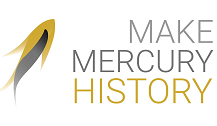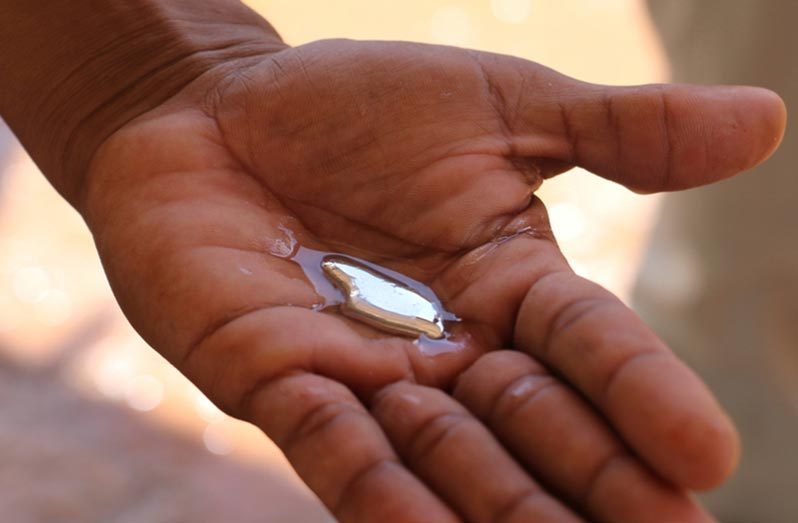We are sure you would have encountered someone who either works in the gold bush or has plans to go into the gold bush. The gold mining sector contributes significantly to the Gross Domestic Product (GDP) of Guyana and is a source of income and livelihood for more than 17, 000 persons.
Mercury, also known as ‘quicksilver’ or ‘silver’, occurs naturally in the earth’s crust. It is, however, highly toxic when used in gold mining activities to amalgamate or bind gold. If this is not properly done using pits, sluice boxes, a retort etc. mercury can be released directly into the environment. Exposure to hazardous fumes can also result in serious health risks.
Mercury and human health
 Exposure to mercury fumes affects the nervous and reproductive systems and damages brain function. Persons exposed to even small amounts of mercury can suffer from symptoms such as tremors, insomnia, memory loss, and headaches. The severity of the impact of exposure to mercury depends on one or a combination of the following factors:
Exposure to mercury fumes affects the nervous and reproductive systems and damages brain function. Persons exposed to even small amounts of mercury can suffer from symptoms such as tremors, insomnia, memory loss, and headaches. The severity of the impact of exposure to mercury depends on one or a combination of the following factors:
? The form of mercury (for example, methyl mercury or elemental (metallic) mercury);
? The amount of mercury in the exposure;
? The age of the person exposed (unborn babies & infants are the most vulnerable);
? The duration of the exposure;
? The exposure pathway (how the person is exposed – breathing, eating, skin contact, etc.) and;
? The health of the person exposed.
How does mercury end up in our system?
Mercury readily seeps into water bodies where it builds up and changes form into a chemical known as methyl mercury. This form of mercury is easily taken up by tiny organisms which are eaten by small fishes. The small fishes may be eaten by bigger fishes, the bigger fishes by an even bigger fish and eventually by people. Therefore, with each fish eaten, methyl mercury builds up in higher amount. This process is known as bioaccumulation where the level of toxicity increases as it moves up the food chain. Additionally, people can eat fish contaminated with mercury which isn’t gotten rid of by cooking.
The Minamata Convention
 Due to many issues associated with mercury use, Guyana was one of the first countries to sign the Minamata Convention on October 10, 2013. The Minamata Convention on Mercury is an international treaty designed to protect human health and the environment from human-induced emissions and releases of mercury and mercury compounds. Over the years, there have been several proactive steps taken to encourage the adoption of safer practices.
Due to many issues associated with mercury use, Guyana was one of the first countries to sign the Minamata Convention on October 10, 2013. The Minamata Convention on Mercury is an international treaty designed to protect human health and the environment from human-induced emissions and releases of mercury and mercury compounds. Over the years, there have been several proactive steps taken to encourage the adoption of safer practices.
One of which was the establishment of a National Working Group to guide the development of a National Action Plan, which will aid in the institutionalisation of the measures for the reduction of mercury use. Among the actors on the National Working Group are regulatory agencies, government ministries and non-governmental organisations.
Another important action towards better mining practices is the development and/or promotion of options for mercury-free mining. Several alternative technologies do not require the use of mercury, including gravimetric processing, which is the easiest entry option. Panning, sluices and shaking tables are also applicable and offer a gold recovery rate of 71-75 percent free gold.
These methods will not only protect the environment and public health from exposure to mercury but also contribute to Guyana meeting its obligations under the Convention.
You can share your ideas and questions by sending letters to: “Our Earth, Our Environment”, C/O ECEA Programme, Environmental Protection Agency, Ganges Street, Sophia, GEORGETOWN, or email us at: eit.epaguyana@gmail.com. Follow us on Facebook and Instagram and subscribe to our YouTube channel.



.jpg)








